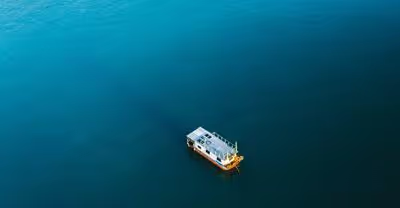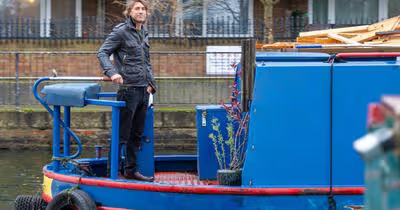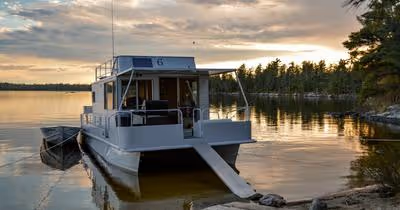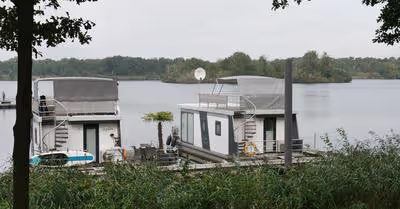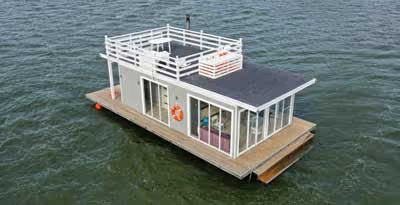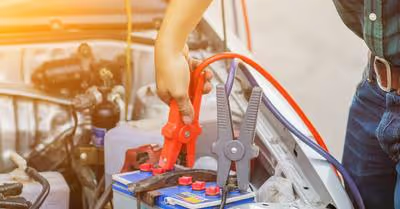
No matter how assured you are of your boat’s battery being okay, you might end up having to jump-start it from a car.
A boat battery is highly susceptible to degradation and corrosion since it is always in contact with water and salt. Especially if you are spending your vacation boating most of the time, the battery on your boat is likely to die when you are out all by yourself. Nothing is worse than it depleting and dying out when you're fishing or enjoying some sea breeze.
When a boat won't start, its battery can be jump-started using a car. Check whether the boat's electrical equipment is turned off. Link the terminals in the right manner and jumpstart. A quick and efficient spark is likely to make your boat work again.
In this way, a car battery can spare you from discomfort and get you back into the sea. A jump starter can also be used to accomplish the goal. However, you should always be cautious when using electric appliances. Avoid any hazards and follow the process carefully, as will be described in the next sections.
After reading this information, you'll be able to jumpstart your depleted boat battery on your own by using a car's battery. So, let's begin with the process!
Steps to Jump Start A Boat Battery From A Car
It's a lot simpler than you might think to jump-start a boat battery using the battery in your car. The steps are very similar to those for jump-starting a car.
Things you need
- Car battery or any high amperage source
- Boat battery to be jump-started
- Jumper cables
- Safety gloves
- Battery isolator (in case of charging)
Steps
Before you begin the process, you have to park the car near your boat and make sure that both vehicles are completely shut down. Locate both batteries and get everything ready. Make sure that the jumper cables to be used later are untangled and intact.
Step 1: Examine the Battery's Condition
The first step is to examine the boat battery to make an estimate of its condition. Who knows? The battery may itself be to blame if your boat is having difficulties starting. Look into the battery carefully to make sure nothing is preventing the battery from doing its normal function.
Look for any objects interfering with the connections. Make sure all the wires are safe and in good shape.
Step 2: Turn Off the Appliances
Don't forget to turn off all the electrical appliances on your boat before making the external connections with the car. Turning off electrical devices prevents excessive battery drainage.
Step 3: Connect the Terminals
A car battery, a jump starter, or the battery of another boat can be used to jump-start your depleted boat battery. Connect the terminals of the boat battery and the fresh jump battery together.
Connect the positive terminal of the dead battery with the red (+) clamp. Next, connect the red (+) clamp to the jump battery's positive terminal. Similarly, attach the black (-) clamp to the dead battery's negative terminal. Connect this black (-) clamp to the jump battery's negative terminal.
Step 4: Start the Boat
Wait for a few minutes to allow the boat's battery to recharge. Start the boat by turning your key as you always do. If it's been jump-started, the engine should operate normally as before. Congratulations! Your lifeless boat has been revived again.
Step 5: Disconnect the Batteries
Remove the jumper cables and detach both batteries in the reverse order to which they were attached before. The battery should continue to work properly even after it is disconnected.
Can You Charge a Boat Battery Using a Car?
Yes, you can charge a boat battery as long as it is a deep-cycle marine battery. Only a deep cycle battery (the battery that is deeply discharged and recharged) can be charged using a vehicle.
It is because this battery is designed to receive and cycle slow-rated energy like that provided by an automobile. However, the battery voltage needs to be 12 for it to be charged by a car. If it is less than 12, it may damage both batteries.
The starting battery (car battery) and the deep cycle battery are connected in a parallel circuit for the purpose of charging. Both the batteries are connected by wires. Unlike jumpstarting, you'll need a battery isolator too for charging your boat battery. The purpose of the isolator is to make sure that neither the boat battery nor the starting battery will discharge.
Things to Know When Charging Your Boat Battery by Car
- There are voltage regulators that help the transmission of charges between the boat and car batteries. To prevent each of the batteries from overheating, the voltage regulator maintains a slow electric flow until the battery is charged fully.
- If your boat battery is fully drained and needs to be connected to the car battery for a large amount of time, the isolator will be helpful; otherwise, you don't need to connect it if charging is only for a short time.
- When charging, the engine speed must increase to 1500 rpm. It may require an additional extension. The alternator's speed is regulated via this extension, resulting in a higher charging rate.
- To prevent the car battery from over-draining, one should also refrain from switching the batteries in between the charging process.
Differences Between Boat and Car Batteries
Just because you can use a car battery to jumpstart or charge a boat battery doesn't mean they are the same. Car batteries and boat batteries differ from one another in certain aspects that lead to a difference in their working and efficacy.
Medium of Working
Boat batteries are designed to operate in a rough aquatic environment, so they are more capable of withstanding vibrations from the waves. Contrasting to these are car batteries, which are made to function on clear, smooth highways. Thus, they are more sensitive to aquatic conditions.
Degree of Work
Car batteries have a lesser degree of work to do. They use the chemical energy stored in lead-acid amalgam and convert it into electrical energy in order to start the engine. The energy lost during engine starting is then replaced by the alternator.
Boat batteries have more work to do. They start the boats' engines. When the boat starts moving, the battery will still keep on working. For example, the battery ensures that each boat's equipment that requires electricity is operational. Therefore, the battery must have the ability to operate for a long time without recharging.
Cranking Amps
The minimum cold temperature at which the batteries are capable of starting engines also matters. Car batteries use cold-cranking amps, whereas boat batteries use marine cranking amps. A boat's MCA capability is tested at the freezing point, but a CCA is performed below it.




